Hand Eye Coordination: The Master Key to Development and Daily Life
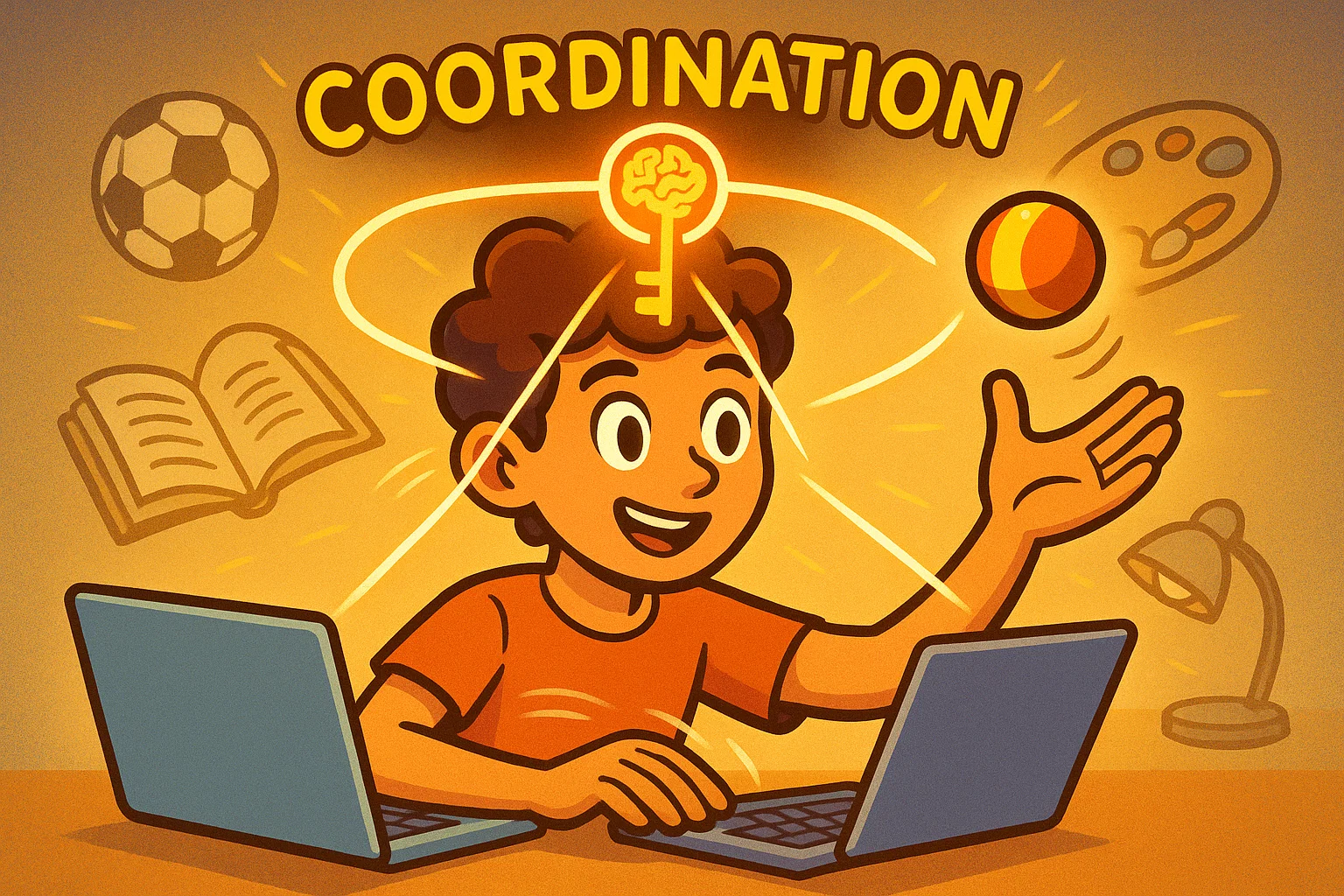
Hand-eye coordination is the essential motor skill that allows our eyes and hands to work together smoothly. It’s the ability to process what we see and translate it into precise hand movements — whether catching a ball, tying shoelaces, or typing on a keyboard. Beyond sports, this coordination supports cognitive growth, academic readiness, and everyday independence.
For parents and educators, understanding how this skill develops—and how to nurture it—helps children reach their full potential. From early childhood milestones to the fine motor precision of surgeons, hand-eye coordination underpins countless human abilities. Let’s explore its core concepts, importance, and practical ways to strengthen it.
Core Concept and Cognitive Basis
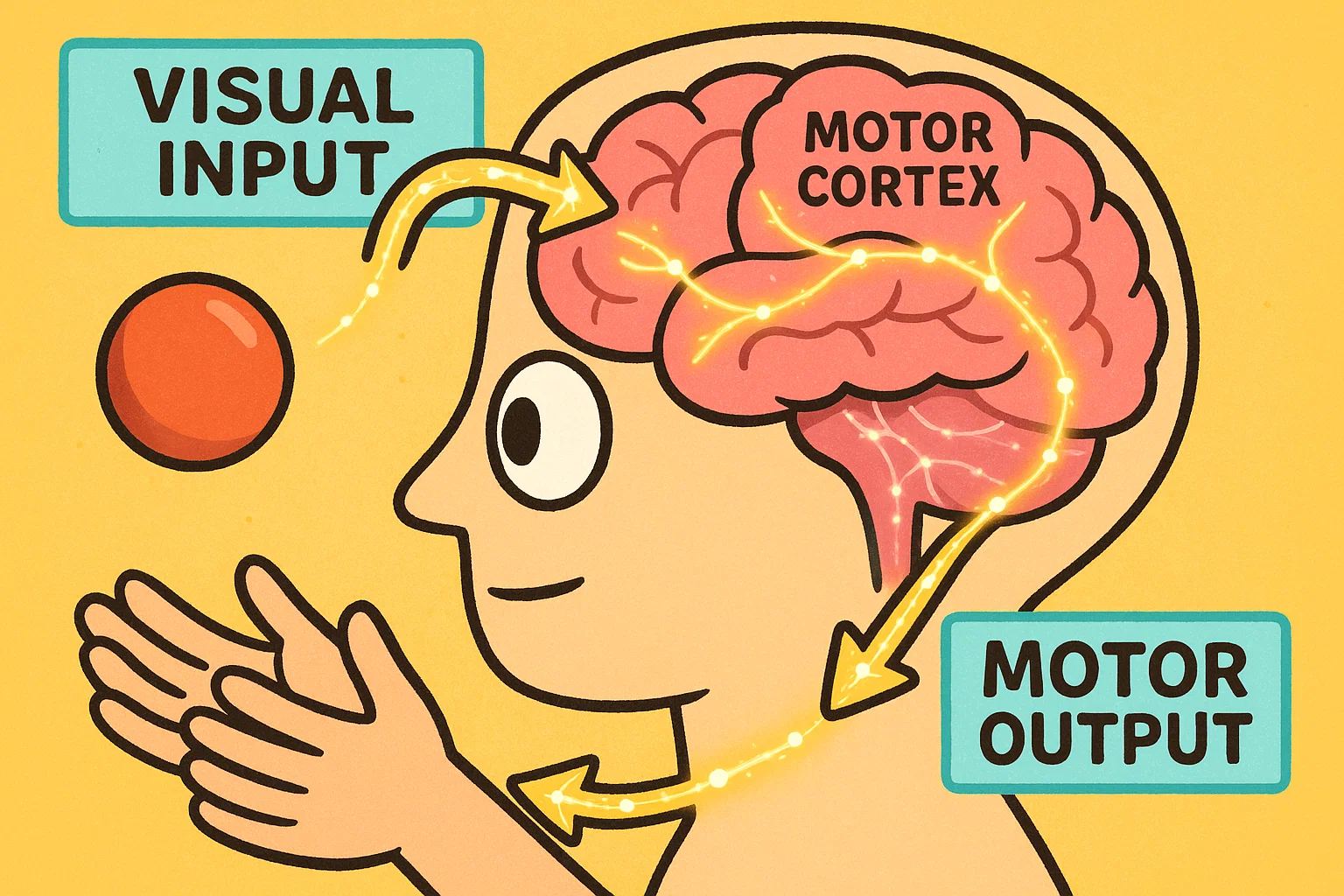
At its heart, hand-eye coordination is a sophisticated skill that demands rapid and accurate communication between the visual, cognitive, and motor systems. It’s the ability to synchronize the movement of the hand in time with the input of the eyes. This process isn’t a simple reflex; it’s a controlled, learned behavior that evolves throughout a person’s growth and development.
Neural and Motor Components
The functioning of eye-hand coordination relies on an intricate neural loop. When you decide to interact with an object—say, pick up a pencil—your brain’s motor areas plan the action. Your visual skills and visual perception allow you to locate the pencil, estimate its distance (a component of visual spatial awareness), and predict its position. This spatial and visual data is then sent to the cerebellum, the brain region critical for motor control and balance.
The cerebellum integrates this sensory input and refines the instructions sent to the muscles in your arm and hand, ensuring the hand movements are precise and accurate. If you slightly miss the pencil, the visual feedback instantly adjusts the next movement—this continuous loop of action and correction is the essence of effective motor coordination. Research demonstrates that visual feedback and motor execution are dynamically integrated to fine-tune skilled actions. For example, Keefe & Watt (2017) showed that the contribution of binocular vision to online grasp control depends on the viewing geometry, meaning the brain adapts the weight of visual cues depending on the spatial configuration of hand and object.
Difference Between Visual-Motor Integration and Reflexes
It’s important to distinguish visual and motor integration from simple reflexes. A reflex, like pulling your hand back from a hot stove, is an involuntary, rapid response managed by the spinal cord. Visual-motor integration is a higher-level process. It involves:
- Visual Tracking and Perception: Accurately following a moving ball or identifying the shape and orientation of a block.
- Cognitive Ability: Planning and decision-making (e.g., “I need to use my pincer grip to pick up this small object.”).
- Motor Execution: The precise muscle movements required to execute the planned action.
Visual-motor integration, therefore, is an intentional action that requires conscious thought and continuous adjustment based on visual stimuli, making it crucial for handwriting, drawing, and tasks involving aiming.
Typical Stages of Development
Coordination development follows a general pattern, though every child progresses at their own pace. Knowing the developmental milestones can help children and their parents track progress and identify potential delays.
| Age Range | Key Hand-Eye Coordination Milestones | Example Activities |
| 0–6 Months | Visually tracks objects; bats at hanging toys. | Reaching for a rattle; following a finger with eyes. |
| 6–12 Months | Reaches accurately for toys; develops pincer grip to pick up small objects. | Putting food into mouth; passing a toy from one hand to the other. |
| 1–3 Years (Toddler) | Can stack a few stacking blocks; uses a spoon clumsily; scribbles. | Stacking blocks, simple shape sorters, coloring. |
| 3–5 Years (Preschool Years) | Improved control; can cut with child-safe scissors; attempts to copy shapes; starts threading beads. | Drawing, cutting paper, simple puzzles, catching a large ball. |
| 5–7 Years | Mastery of complex tasks like good handwriting, tying laces, accurately throwing and catching a ball. | Catching a ball, writing, intricate drawing, playing with construction sets. |
If a child consistently misses these milestones, an evaluation by an occupational therapist or pediatrician may be necessary to rule out underlying issues.
Importance in Daily Life and Human Development
The value of good hand and eye coordination extends far beyond the playground. It’s a core skill that impacts almost every aspect of a person’s life, from self-care to complex professional tasks.
Early Childhood Milestones
For young children, developing strong coordination skills is synonymous with achieving independence. The ability to coordinate the eyes and hands allows them to:
- Self-Feed: Using a spoon or fork, which is one of the earliest signs of proficiency in hand-eye coordination.
- Dress Themselves: Zipping zippers, buttoning buttons, and snapping snaps.
- Play: Engaging in construction play, puzzles, and interactive games, which are vital for cognitive development.
- Early Academics: Holding a crayon or pencil correctly, drawing shapes, and beginning to form letters for handwriting.
A deficit, often noted as poor hand-eye coordination, can affect their self-esteem and willingness to try new things.
Adult Applications in Work and Recreation
While we often focus on child development, proficient hand-eye coordination remains critical in adulthood. Everyday activities such as driving a car, cooking, playing a musical instrument, and most sports rely heavily on well-developed motor coordination.
In the professional world, jobs that require high degrees of precision are entirely dependent on this skill. Think of a surgeon performing delicate procedures, a watchmaker assembling tiny components, or a mechanic aligning machine parts. For these professionals, a coordination test might even be part of their licensing or training.
Connection to Academic and Athletic Success
There is a clear link between motor coordination and academic achievement. Studies suggest that children with better fine motor skills and visual integration are often more prepared for the demands of the classroom.
- Academics: Better handwriting and faster note-taking improve a student’s ability to keep up in class. Tasks like cutting, pasting, and navigating technology all depend on coordinated hand movements.
- Athletics: Hand-eye coordination is perhaps most visible in sports. Whether it’s hitting a small tennis ball with a racket, dribbling a basketball, or accurately throwing a ball to a target, success in virtually all sports that involve equipment or a moving ball relies on this precise timing and control. The ability to judge distances and speeds while initiating action defines high-level coordination in sports.
Fine and Gross Motor Skills
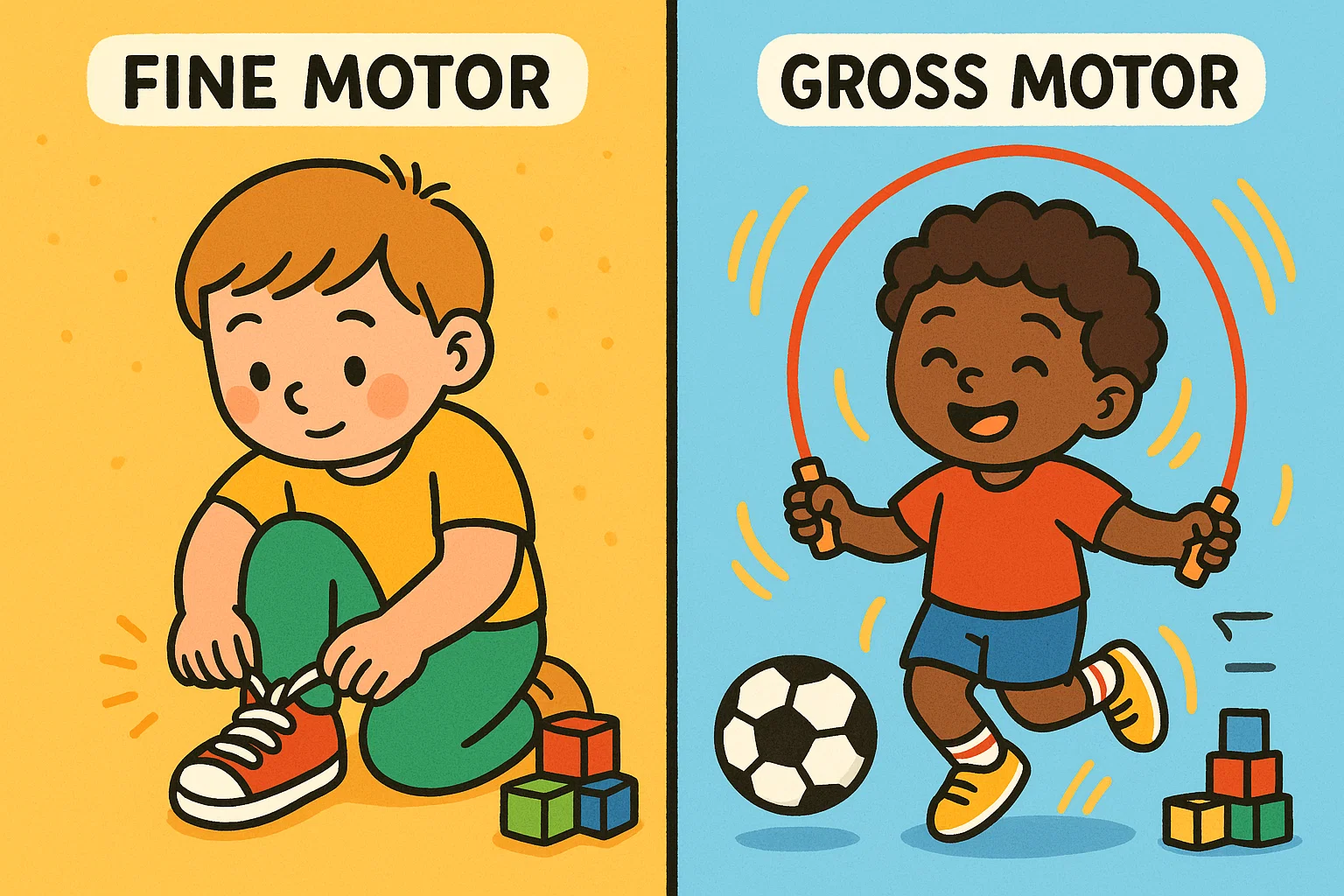
To fully appreciate hand-eye coordination, we must distinguish between the two primary types of physical movement it governs: fine motor skills and gross motor skills. Although distinct, they are highly interconnected and both are vital components of overall motor coordination.
Fine Motor Skills and Precision Tasks
Fine motor skills involve the use of the small muscles in the hands and wrists, often in concert with the eyes. They require high precision and control. Hand-eye coordination in these tasks is critical for self-care and academic success.
Examples of tasks requiring fine motor skills and visual integration:
- Pincer Grip: Picking up small objects using the thumb and index finger.
- Handwriting: The intricate control needed to form legible letters.
- Threading Beads or lacing.
- Cutting with scissors (guiding the scissors with the hand while the eyes track the line).
If a child struggles with fine motor skills, it can seriously affect their ability to complete schoolwork or self-care routines.
Gross Motor Skills and Whole-Body Movements
Gross motor skills involve the larger muscles of the arms, legs, torso, and feet, and they are responsible for large-scale movements like running, jumping, and balancing. Gross motor development also relies on hand and eye teamwork.
Examples of tasks requiring gross motor skills with visual guidance:
- Catching a ball or throwing a ball.
- Climbing stairs or a jungle gym.
- Riding a bicycle.
- Swimming.
A child’s ability to participate in play sports or even navigate their environment safely is based on the proficiency of their gross and fine motor skills.
Balancing Both Types Through Training
Optimal coordination development involves training both muscle groups. A child who is great at stacking blocks (fine motor) but struggles with catching a ball (gross motor) needs a balanced approach.
To help improve both aspects, an effective strategy involves:
- Integrating whole-body movements with visual focus (e.g., throwing a beanbag at a distant target).
- Using activities that require the simultaneous coordination of multiple systems (e.g., jump rope, where the eyes track the rope and the hands turn it while the legs jump).
Factors Affecting Coordination Quality
While genetics play a role, the quality of a person’s eye hand coordination is influenced by a combination of internal and external factors, ranging from physical health to cognitive function.
Impact of Vision and Depth Perception
The quality of visual skills is paramount. If a person does not have perfect vision or struggles with visual perception, the brain receives inaccurate data, making accurate hand coordination nearly impossible.
- Depth Perception: The ability to judge different distances is essential for almost all coordinated actions, from pouring a drink to catching a ball.
- Visual Tracking: The ability to smoothly follow a target, like a moving ball, allows the motor system to anticipate its location. A deficiency here can result in noticeable poor hand-eye coordination.
Neurological and Physical Conditions
Certain inherited or acquired medical conditions can significantly affect motor skills and coordination.
- Developmental Coordination Disorder (DCD): Previously known as dyspraxia, this is a condition where children have marked difficulty with motor skills and coordination, despite having normal intelligence.
- Cerebral Palsy and other neurological disorders directly affect the motor areas of the brain, leading to varying degrees of poor motor skills and involuntary muscle movements.
- Inner Ear Issues: Since the inner ear governs balance and spatial orientation (visual-spatial awareness), issues here can impact the information needed to guide the hand accurately.
An early diagnosis, often by an occupational therapist, allows for targeted intervention and therapy to help children develop compensating strategies.
Role of Concentration and Reaction Time
Hand-eye coordination is a cognitive process as much as a physical one. Effective performance requires strong concentration and quick cognitive processing.
- Concentration: The ability to filter out distractions and focus on the task at hand is vital for accuracy.
- Reaction Time: The speed at which a person can process visual stimuli and initiate a physical response is a key metric in a coordination test, especially in sports where reacting to a moving ball is crucial. The faster the processing, the more efficient the resulting motor control.
Problems Related to Poor Coordination
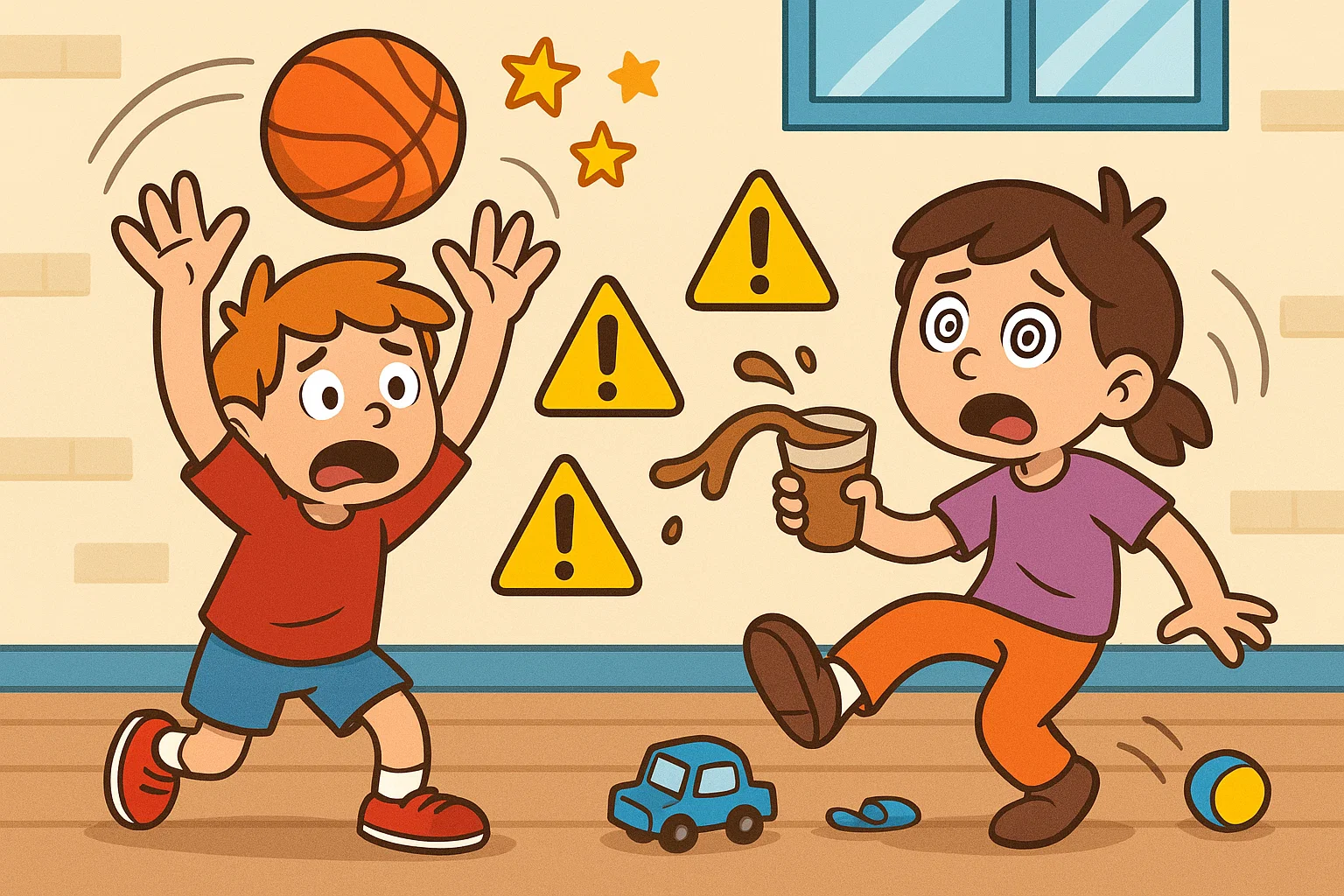
Recognizing the signs of poor hand-eye coordination is the first step toward intervention. While occasional clumsiness is normal, consistent difficulty with everyday activities can indicate an underlying issue that needs attention.
Common Signs in Children
Parents and educators should be aware of these common signs of delayed or poor motor skills:
- Difficulty with self-care: Struggles with buttons, zippers, shoe-tying, or using hand-eye coordination to feed themselves neatly.
- Academic struggles: Messy handwriting, slow note-taking, difficulty cutting or coloring within the lines.
- Play and sports challenges: Consistent difficulty catching and throwing a ball, frequent tripping, or avoiding play sports altogether.
- Spatial awareness issues: Misjudging distances, bumping into objects, or having trouble lining up objects like stacking blocks.
Issues in Adults
While less common, adults can also experience a decline or deficiency in hand-eye coordination due to injury, illness, or age.
- Post-Injury/Stroke: Neurological events can damage the brain’s motor areas, often requiring extensive rehabilitation.
- Age-Related Decline: Natural aging can slow reaction time and reduce the sharpness of visual skills, affecting driving, hobbies, and simple household chores.
- Work Performance: Difficulty with tasks requiring precision, such as soldering, typing quickly, or operating complex machinery.
Clinical and Therapeutic Evaluation
If concerns arise about a child’s or an adult’s motor coordination, a professional evaluation is the most reliable next step.
- Pediatrician/Physician: A general health check to rule out underlying medical conditions.
- Occupational Therapist (OT): An occupational therapist is often the primary specialist. They use standardized tests and observation to assess gross and fine motor skills and recommend specific hand-eye coordination activities and therapies.
- Optometrist/Ophthalmologist: A thorough eye exam is crucial to ensure vision problems aren’t the root cause of poor hand-eye coordination.
Measurement and Assessment Methods
Assessing hand-eye coordination is a clinical necessity for diagnosis, but it’s also a useful tool for athletes and trainers. A formal coordination test provides objective insight into an individual’s coordination abilities.
Physical Field Tests
These are often simple, observable tasks that measure functional ability.
| Test Name | Skill Assessed | Target Population |
| Purdue Pegboard Test | Fine motor skills, dexterity, bimanual coordination. | Children and adults; often used in vocational assessments. |
| Throwing and Catching Test | Gross motor skills, reaction time, and tracking a moving ball. | Primary for child development and athletic screening. |
| VMI (Visual-Motor Integration) Test | Measures the ability to copy geometric shapes, directly testing visual and motor integration. | Primarily preschool years and school-age children. |
Computer-Based Assessments
Modern technology offers objective, highly sensitive ways to measure the speed and accuracy of hand movements.
- Digital Tracking: Devices that measure movement speed and accuracy during tasks like tracing lines or clicking targets on a screen. This is particularly useful for measuring reaction time to visual stimuli.
- Simulators: Used in professional settings (e.g., flight simulators, surgical training) to mimic real-world tasks that require high-level eye coordination.
Interpreting Scores and Results
Test scores are compared to established norms for the person’s age group.
- Percentiles: A score in the 50th percentile is average. A low percentile (e.g., 5th percentile) suggests a delay in coordination development and may prompt a recommendation for intervention by an occupational therapist or physical therapist.
- Qualitative Observation: Beyond the score, the therapist observes how the person performs the task (e.g., excessive muscle tension, hesitation, lack of smoothness in hand movements). This provides context for the quantitative data.
Training and Improvement Techniques

The excellent news is that hand-eye coordination is a skill, and like any skill, it can be significantly improved with practice. The key is to encourage your child (or yourself) to engage in activities that require the simultaneous use of eyes and hands.
Daily Exercises for Adults and Children
Simple, consistent practice can make a big difference.
- Pencil and Paper Tasks: Drawing, tracing, coloring, and dot-to-dot puzzles (excellent for fine motor skills).
- Juggling: Start simple—perhaps with scarves—then move on to small beanbags. This is a powerful way to train the eyes to track multiple objects and the motor areas to manage complex rhythms.
- Tabletop Games: Picking up and organizing small objects, playing pick-up sticks, or working with intricate LEGO sets.
Sports That Strengthen Coordination
Many sports are excellent for strengthening coordination skills because they require rapid processing of a moving ball and quick execution.
- Racket Sports (Tennis, Badminton, Ping Pong): These demand precise judgment of the speed, spin, and trajectory of a tennis ball or shuttlecock, followed by accurate hand coordination to strike it.
- Basketball: Dribbling requires constant focus on the ball while the eyes also track teammates and the goal. Throwing a ball to a moving target is also a great exercise.
- T-Ball/Baseball: Hitting a stationary or pitched ball is the ultimate test of coordination and timing.
Occupational and Rehabilitation Therapy
For those with clinically diagnosed poor motor skills or neurological issues, structured therapy is crucial.
- OT Interventions: An occupational therapist designs personalized programs, often using specialized tools and games, to work on specific deficits, such as improving the accuracy of the pincer grip or enhancing visual tracking.
- Neuro-Motor Training: Exercises that focus on the connection between the brain and movement, using balance boards, light-up reaction walls, or specialized computer programs to speed up the processing of visual stimuli.
Hand-Eye Coordination Activities
Practical, fun, and engaging hand-eye coordination activities are the best way to help children (and adults) strengthen this skill naturally.
Indoor and DIY Games
You don’t need expensive equipment to get your child involved in coordination practice.
- Threading Beads and Lacing Cards: Perfect for developing fine motor control and the simultaneous coordination of hands and eyes.
- Tossing into Containers: Use crumpled paper balls or lightweight socks and toss them into a laundry basket or bucket at different distances.
- Cookie Cutter Tracing: Using small cookie cutters to trace shapes on paper, which requires precise hand movements and visual guidance.
Outdoor Coordination Challenges
Getting outside adds the dimension of larger gross motor development and more dynamic objects.
- Water Balloon Toss: A fun way to practice catching a ball and judging its trajectory.
- Simple Ball Skills: Start with a large, lightweight ball, and practice catching a ball and throwing a ball back and forth. Slowly decrease the size of the ball to increase the challenge (e.g., from a beach ball to a tennis ball).
- Sidewalk Chalk Drawing: Large-scale drawing engages different muscles and requires large-scale spatial planning.
Digital and Interactive Tools
While screen time needs balance, some digital tools are specifically designed to enhance coordination skills.
- Targeted Video Games: Games that require quick aiming and accurate button pressing can improve reaction time and the ability to process visual stimuli.
- Educational Apps: Apps that involve dragging and dropping, matching, or tracing can refine fine motor skills and visual integration.
Tips for Parents and Educators
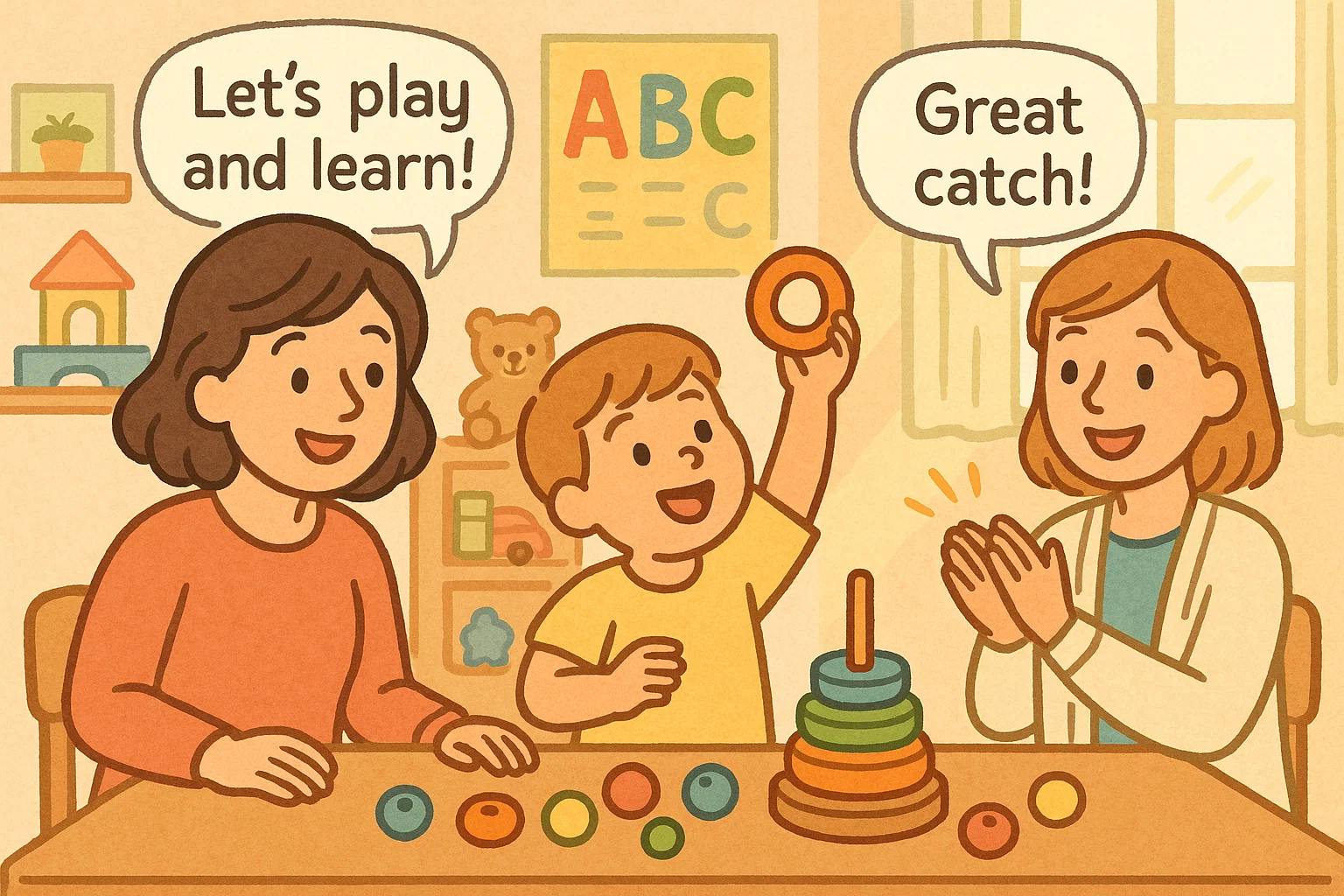
As the primary guides in a child’s life, parents and educators have a vital role in fostering coordination development.
Encouraging Skill Development Through Play
The best way to help children develop this skill is to make it a natural part of their day.
- Offer Open-Ended Toys: Provide construction toys, art supplies, and materials that require manipulation and planning (e.g., clay, stickers, LEGOs).
- Focus on the Process, Not Perfection: Encourage your child to try new tasks without fear of failure. Clumsy attempts at catching a ball are still practice.
- Model the Skill: Show your child how you tie your shoes or cut food, explaining what your eyes and hands are doing.
Identifying Delays and When to Seek Help
While some children are naturally clumsy, persistent struggles need attention.
- If a child consistently struggles with everyday activities more than their peers do.
- If they show marked frustration or refusal to participate in activities like coloring, puzzles, or play sports.
- A consultation with a pediatrician is recommended if, by the preschool years, a child is still having significant difficulty with simple tasks like using utensils or basic gross motor development (e.g., jumping). Early intervention with an occupational therapist can be highly effective.
Integrating Activities Into Daily Routines
The easiest way to ensure practice is to incorporate it into existing routines.
- Kitchen Chores: Let them stir ingredients, pour from small pitchers, or sort cutlery.
- Getting Dressed: Turn buttoning and zipping into a fun morning challenge.
- Homework Breaks: Use a simple beanbag toss or eye coordination games as a brain break.
Preventive and Lifestyle Aspects
A holistic approach to well-being significantly supports optimal brain function and, by extension, better eye hand coordination.
Nutrition and Hydration
A brain that is well-fueled is a brain that can process visual information and execute motor control more efficiently.
- Omega-3 Fatty Acids: Essential for brain health and optimal neural communication, which is the backbone of all coordination skills.
- Hydration: Even mild dehydration can affect concentration and reaction time, both crucial for accurate hand coordination.
Sleep and Recovery
Quality sleep is when the brain consolidates learning, including the motor skills practiced during the day.
- Consistency: A regular sleep schedule supports alertness and focus, enhancing the ability to process visual stimuli quickly.
- Rest: Adequate rest reduces fatigue, which can slow down the speed and precision of hand movements.
Stress and Focus Management
High stress levels can impair concentration, reducing the quality of hand-eye coordination.
- Mindfulness/Focus Exercises: Simple breathing or focusing games can improve sustained attention, which is necessary for accurately tracking a moving ball or performing a precise task.
- Breaks: During tasks that require intense focus, short breaks help reset the brain and restore concentration for high-quality coordination.
Related Topics
Hand-eye coordination doesn’t exist in a vacuum; it’s one element of a larger system of physical and cognitive development.
Visual Perception and Depth Cues
The ability of the brain to make sense of what the eyes see is called visual perception. This is what allows us to process visual spatial information and judge different distances. If a person has strong motor skills but poor hand-eye coordination, the problem may lie in how their brain interprets the visual data.
Cognitive Speed and Reaction Time
Cognitive ability is the engine that drives the response. The speed at which a person can switch attention and execute a response (reaction time) is critical. Activities that challenge decision-making under time pressure, such as certain eye coordination games, can improve this cognitive speed.
Posture and Balance Training
Effective hand coordination requires a stable base. Training balance and core strength (posture) ensures that the body can remain steady while the eyes and hands perform the task. Exercises that require balancing on one leg while performing a hand movement are great for integrating these systems.
Hand Eye Coordination Summary and Key Takeaways
Hand-eye coordination is one of the most important foundational motor skills for healthy development and quality of life at any age. It is the sophisticated ability to synchronize visual information and hand movements, allowing us to master tasks from stacking blocks to complex surgery.
Key Takeaways:
- Foundational Importance: This skill is vital for independence, academic success (handwriting), and excelling in sports that involve coordination, such as catching or throwing a ball.
- It’s Learned, Not Just Inherited: While genetic factors exist, coordination development is highly influenced by consistent practice of hand-eye coordination activities that challenge the simultaneous use of our hands and eyes.
- Two Sides of the Coin: Both gross motor skills (whole-body movement) and fine motor skills (precision tasks) rely on effective visual guidance, and both must be trained for optimal motor coordination.
- Early Intervention Matters: Recognizing signs of poor hand-eye coordination in the preschool years and seeking an evaluation from an occupational therapist can prevent future struggles in everyday activities.
- Practice is Play: The most effective way to help children develop this skill is through engaging, age-appropriate eye coordination games and tasks that demand attention to a target, like aiming, tracing, or hitting a moving ball.
By prioritizing activities that strengthen this essential skill, you invest directly in cognitive development, physical dexterity, and overall confidence. What is one new hand-eye coordination activity you plan to try today?
